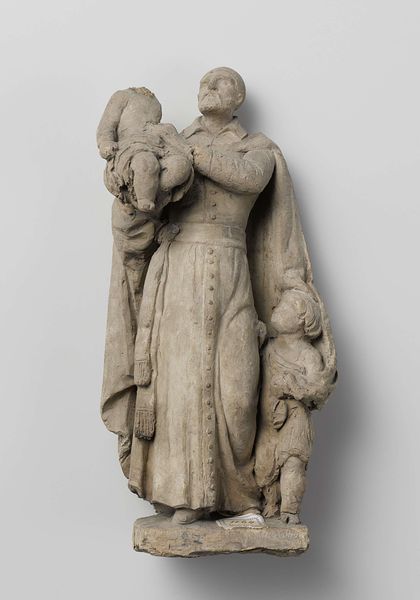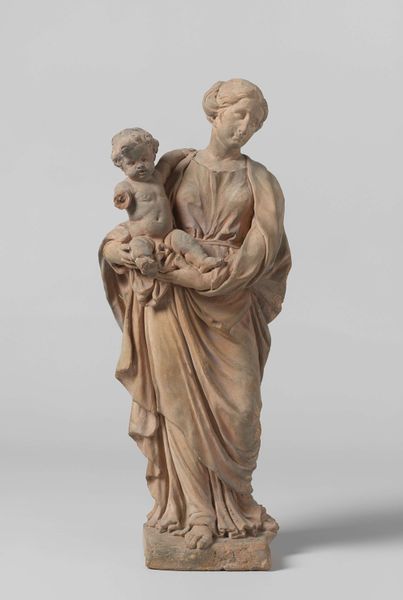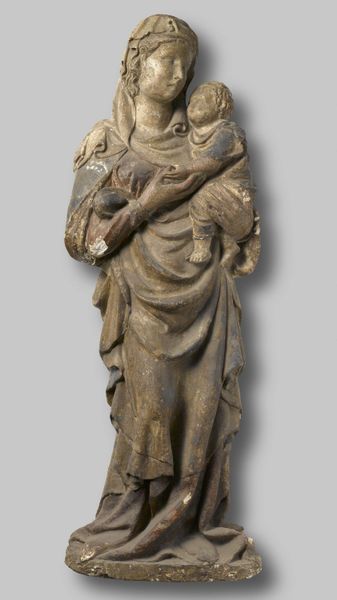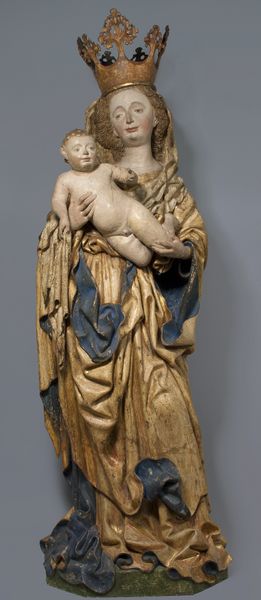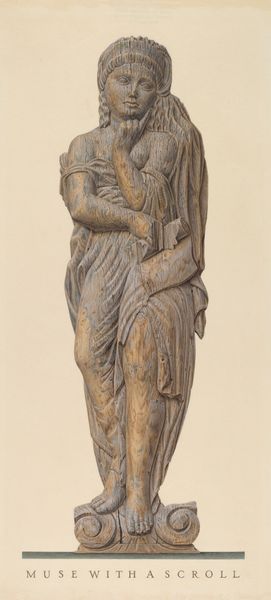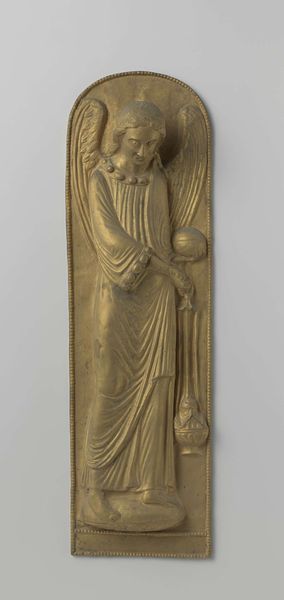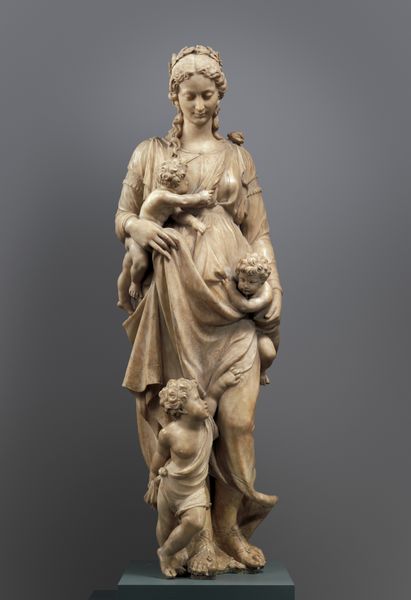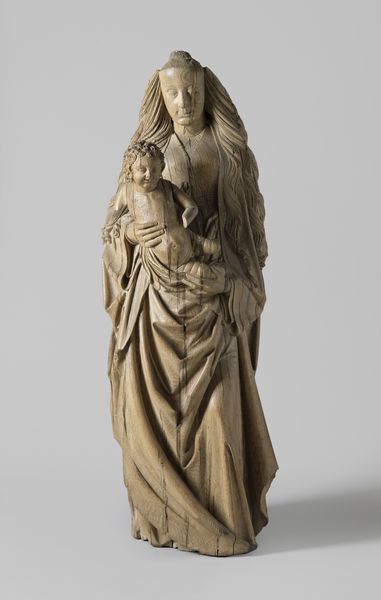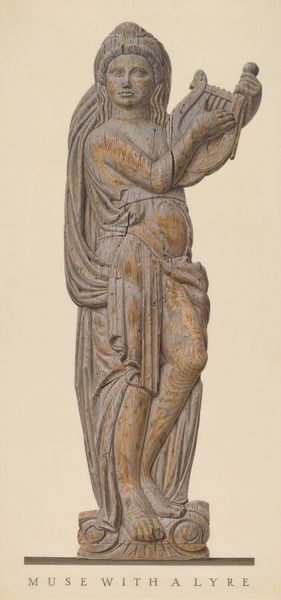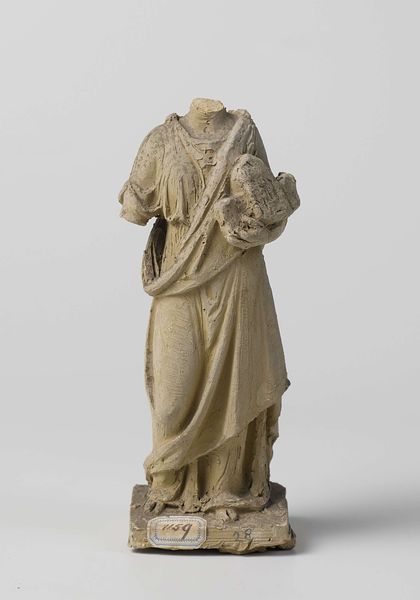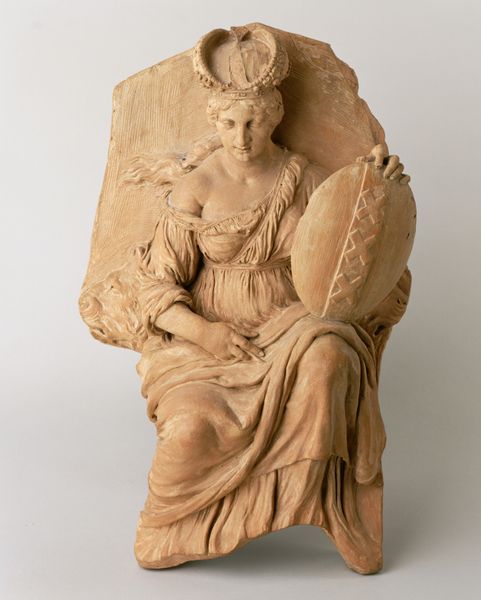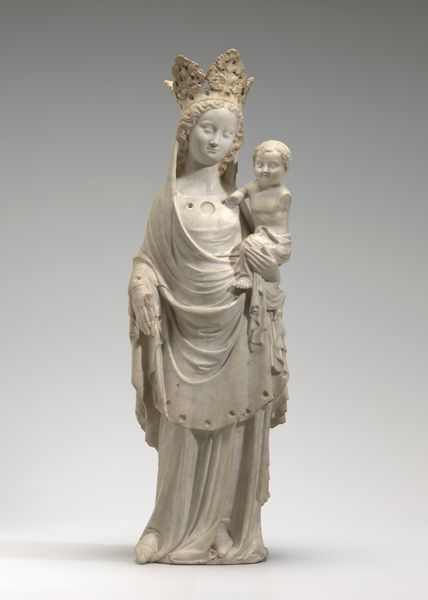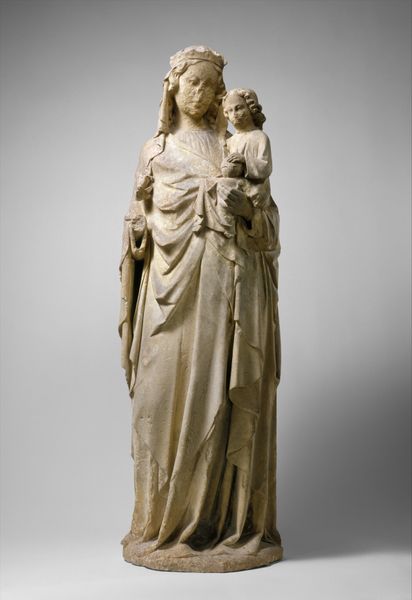
sculpture, wood
#
sculpture
#
gothic
#
figuration
#
sculpture
#
wood
Dimensions: height 103 cm, width 38 cm, depth 22 cm
Copyright: Rijks Museum: Open Domain
Editor: Here we have a sculpture called "Maria met kind," dating back to about 1520 and created by Hans Leinberger. The medium is wood, and what strikes me is the austerity, a sense of profound stillness even within the dynamic pose. How do you see this piece functioning within its historical moment? Curator: The restrained emotionality you observe speaks volumes about the sculpture's cultural context. This wasn't simply an image of maternal tenderness. It was produced for a world saturated with religious imagery; similar figures in churches and private collections all across Europe shaped the daily spiritual life. Editor: So, beyond personal devotion, how did its physical presence and the politics of the image shape religious sentiment? Curator: The politics are fascinating. While on the surface, it’s about religious adoration, this also affirmed a particular socio-political order. A maternal figure with the son of God legitimizes familial values, a hierarchical social structure and traditional gender roles. In this period leading up to the Reformation, the church leveraged visual imagery to underscore their doctrines and authority. Editor: That's an interesting tension – piety and power embedded within the artwork itself. I wouldn't have considered that the very depiction reinforces existing social norms. Does the material – wood – play into this reading? Curator: Absolutely. Wood was accessible and relatively affordable, making religious art available to a wider audience, even if only through the presence of a similar image within a communal church setting. Consider the ways the rise of printmaking and increased circulation of images simultaneously democratized and commodified religious beliefs at this time. Editor: It's all connected, isn’t it? The image, the material, and the audience, all working together to shape how the world was understood. This makes me want to explore other pieces from this period now. Curator: Exactly. Examining how images operate within society, we begin to see how deeply art is enmeshed with social power. It's definitely worth exploring more.
Comments
No comments
Be the first to comment and join the conversation on the ultimate creative platform.
